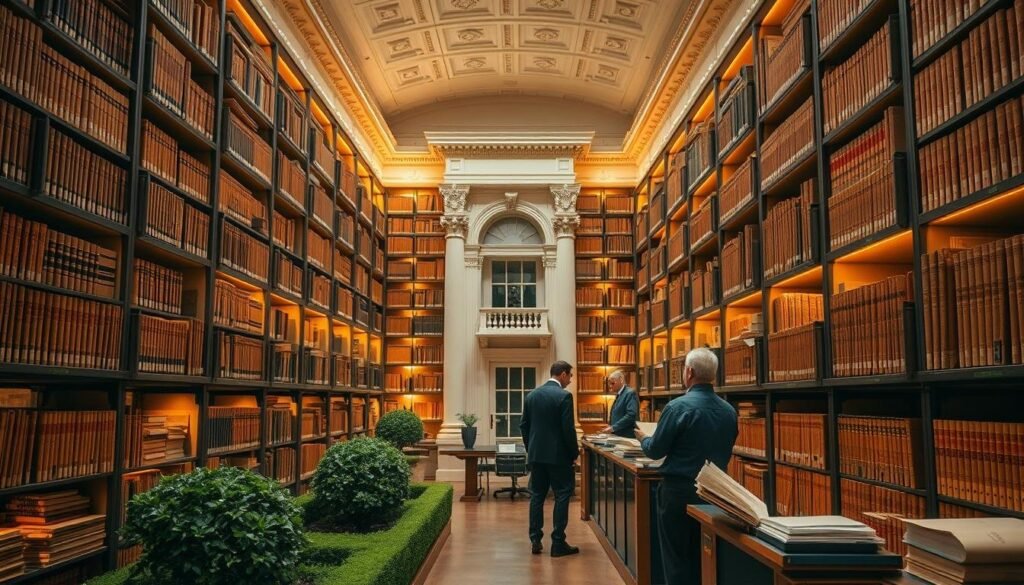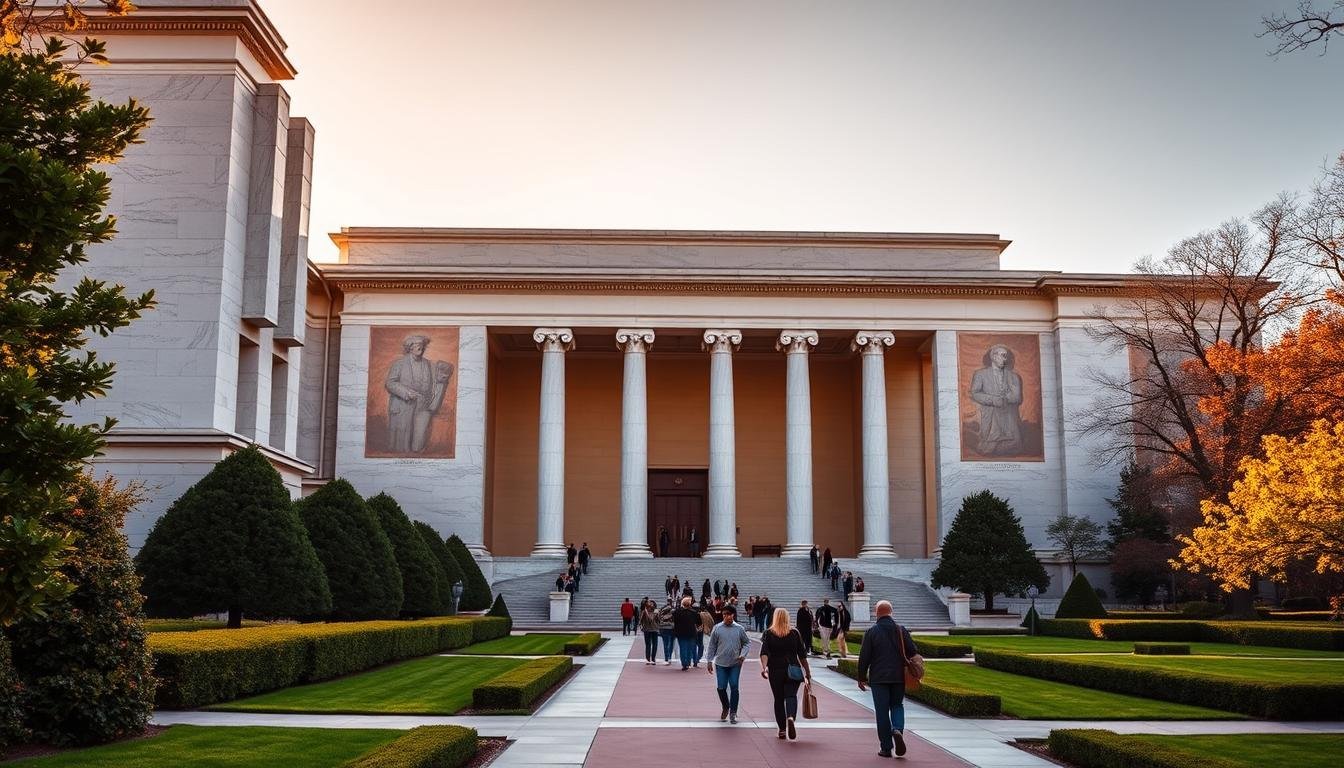Does Every US President Have a Library? As you explore the fascinating world of US presidents, you might wonder if each has a library dedicated to their legacy. The concept of presidential libraries is deeply rooted in preserving history.
The presidential library system plays a significant role in maintaining the archives of past presidents. It contributes to the historical narrative of the United States. By understanding the history and importance of these libraries, you can gain insight into the legacy of US presidents.
You’ll discover how these libraries preserve US presidential history, and whether every president has one. This knowledge will enhance your understanding of the presidential library system’s significance.
Contents
- 1 What Are Presidential Libraries?
- 2 The History of Presidential Libraries
- 3 Does Every US President Have a Library?
- 4 How Presidential Libraries Are Established and Maintained
- 5 Visiting Presidential Libraries: What You Can Experience
- 6 Conclusion: Does Every US President Have a Library?
- 7 FAQ
- 7.1 What is the purpose of a presidential library?
- 7.2 Are all presidential libraries run by the National Archives and Records Administration (NARA)?
- 7.3 Can anyone visit a presidential library?
- 7.4 How are presidential libraries funded?
- 7.5 Do all US presidents have a library?
- 7.6 What can you expect to find in a presidential library?
- 7.7 Can you conduct research at a presidential library?
What Are Presidential Libraries?
Presidential libraries are more than just places to store historical documents. They are key to understanding our past. These libraries hold the papers, records, and memorabilia of a US president and their team. They serve as vital resources for historians, researchers, and the public, offering insights into a president’s life and term.
The main job of a presidential library is to keep safe the historical materials from a president’s time in office. This includes documents on policy decisions, letters, and major events. By keeping these records, libraries give a full view of the presidency and its effects on the country.
You can learn about a president’s life and presidency through the materials in these libraries. From photos and speeches to personal items, the collections show the president’s role and duties in many ways.
Presidential libraries also help with education, offering programs and resources for students and teachers. They help deepen our understanding of American history and the presidential system.
By visiting or exploring presidential libraries, you get to see a lot about the history of US presidents and their teams. These libraries are not just places to store history. They actively help us understand our past.
The History of Presidential Libraries
Exploring the history of presidential libraries shows how they’ve changed over time. The idea of keeping presidential records started early in the US. At first, these papers were seen as private, but by the 20th century, the idea of public libraries for them grew.
The first library was set up by Franklin D. Roosevelt in 1941. Roosevelt wanted a place to keep his papers and other historical items from his time in office. This idea led the way for other presidents.
Roosevelt’s library started a new chapter in saving US presidential history. Later, the Presidential Libraries Act of 1955 helped set up and keep these libraries going.
- The National Archives and Records Administration (NARA) manages these libraries.
- They hold presidential papers, records, and historical items.
- They also let the public learn about US presidential history.
Learning about presidential libraries shows why it’s key to save historical documents. It also highlights the role these libraries have in teaching the public about past presidents.
Does Every US President Have a Library?
Exploring the presidential library system shows not all US presidents have one. Creating a library is complex. It depends on the president’s legacy, their time in office, and their administration’s actions.
The presidential library system is run by the National Archives and Records Administration (NARA). They keep presidential records and artifacts safe. But, a library for a president is only made if certain conditions are met. The Presidential Libraries Act of 1955 and its changes have shaped the system.
Donating personal papers is a big part of getting a library. Libraries are funded by both public and private sources. Presidents or their families work with NARA and government bodies to set up and keep libraries running.
Looking at history, not every president had a library. The idea of presidential libraries started in the mid-20th century. The first was Franklin D. Roosevelt’s in 1940.
In short, whether every US president has a library is not a simple yes or no. It’s influenced by history, laws, and the president’s efforts. As you learn more about the presidential library system, you’ll see its importance and complexity.
How Presidential Libraries Are Established and Maintained
Setting up a presidential library is a complex process. It starts with the president’s choice to create one. Then, the National Archives and Records Administration (NARA) and the president’s family or estate get involved.
The Presidential Libraries Act of 1955 makes these libraries possible. It lets them be part of the NARA system. This act is key for setting up and keeping presidential libraries running. The library’s building costs are often covered by donations from the president’s loved ones and supporters.
After a library is built, keeping it running is a big job. NARA takes charge of managing the library once it’s open.
Maintenance and Funding of Presidential Libraries
Keeping presidential libraries going is essential. NARA handles the day-to-day tasks, like keeping documents and artifacts safe. But, the cost is split among different groups.
- The federal government helps out with NARA’s budget for the libraries.
- Private donations are also important for specific projects or programs.
- Foundations linked to the libraries often help with their upkeep too.

This shared funding helps keep the libraries alive. They offer a deep look into the history of US presidents and their impact.
Looking into presidential libraries shows their value. They are key to keeping historical records safe and available to everyone.
Visiting Presidential Libraries: What You Can Experience
Presidential libraries are more than just places to store documents. They are lively spots that tell the stories of America’s leaders. When you visit, you’ll find exhibits, programs, and activities that make history come alive.
Seeing original documents and artifacts is a big part of the experience. These items let you connect with history in a real way. They help you understand the president’s decisions and policies better.
Interactive exhibits are another highlight. You might see timelines, Oval Office replicas, or campaign memorabilia. These make the libraries fun and educational for everyone, from families to history buffs.
Educational Programs and Activities
Presidential libraries also offer educational programs. You can attend lectures, workshops, and even simulations of presidential decisions. These activities give you a deeper look into presidential history.
Here’s a quick look at what you might find at presidential libraries:
| Feature/Activity | Description |
|---|---|
| Original Documents and Artifacts | Explore authentic items related to the president’s life and presidency. |
| Interactive Exhibits | Engage with hands-on exhibits that recreate historical settings and events. |
| Educational Programs | Participate in lectures, workshops, and other activities that delve into presidential history. |
Visiting a presidential library is a rewarding experience. It offers a unique look into the life and presidency of the honored leader. By exploring the exhibits, programs, and activities, you’ll gain a deeper understanding of US presidential history and the library system.
Conclusion: Does Every US President Have a Library?
You now understand the presidential library system and its role in preserving US history. The history of these libraries is complex and fascinating, spanning decades. Not every US president has one, but many have left a lasting legacy through them.
Learning about these libraries shows how they are established and maintained. By visiting, you can see the rich history and culture of the United States. The system educates and inspires, offering a unique look into the lives of US presidents.
Reflecting on whether every US president has a library, you’ve gained valuable insight. This knowledge deepens your appreciation for US history and the people who shaped it.
See Also: The Surprising Link Between Jennifer Coolidge and President Coolidge
FAQ
What is the purpose of a presidential library?
A presidential library holds the papers, records, and memorabilia of a president. It gives insights into their life and time in office.
Are all presidential libraries run by the National Archives and Records Administration (NARA)?
Yes, NARA manages and keeps presidential libraries. They make sure historical materials are preserved and available to everyone.
Can anyone visit a presidential library?
Yes, anyone can visit a presidential library. They offer exhibits, programs, and educational activities. These help visitors learn more about presidential history.
How are presidential libraries funded?
Presidential libraries get funding from both public and private sources. This includes NARA, the president’s family, and private donations.
Do all US presidents have a library?
No, not every US president has a library. Whether a president gets one depends on several factors. This includes the library system’s rules and the president’s or their team’s efforts.
What can you expect to find in a presidential library?
In a presidential library, you’ll find exhibits, archival materials, and educational programs. They offer insights into the president’s life and their time in office. You’ll also learn about the historical context they served in.
Can you conduct research at a presidential library?
Yes, you can do research at a presidential library. They provide access to archives and research facilities. This allows historians, researchers, and the public to delve deep into presidential history.

Hi, I am Tatum Bradford from Washington. I have a background in political science and work as a senior revenue officer. I love learning about U.S. presidents and sharing interesting facts about political history.

